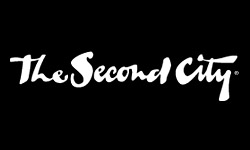How the Second City became first in comedy

As nearly everybody knows, or should know, the Second City is responsible for producing some of the best comedic talent of the last fifty years—Martin Short, Jim Belushi, Tina Fey—the list is quite long. But the story of how the Second City became the number one source for great comedy, (and the University of Chicago’s not so small role in its rise to fame), is perhaps less well known.
As this excerpt from Stephen E. Kercher’s Revel with a Cause: Liberal Satire in Postwar America relates, it was in the mid-50’s that, David Shepherd, Paul Sills, and Eugene Troobnic formed the Compass Players—an improvisational comedy troupe consisting of “alumni, dropouts and hangers-on from the University of Chicago,” several of whose members would go on to form the venerable Second City in 1959.

But even though stardom didn’t strike until the Second City, it was the Compass Players who established the improvisational style, and foundational principles upon which the fame of its successor relied. Expanding on the chapters of Kercher’s book touching on the Players, Janet Coleman’s The Compass: The Improvisational Theatre that Revolutionized American Comedy provides the definitive account of this phenomena and how the rag-tag comedy troupe from the U of C gave birth to a new form of improvisational comedy, and a radically new kind of comedian.
It’s always nice to hear about all the home grown talent we’ve got here in the Windy City, let alone Hyde Park, so after you’ve made your way down to the Second City this weekend to catch some of the star-studded shows they’ve got lined up for their 50th anniversary celebration, grab a copy of The Compass to find out how it all began.